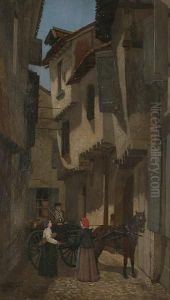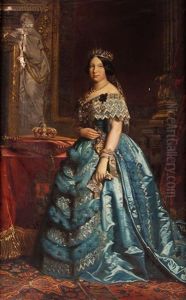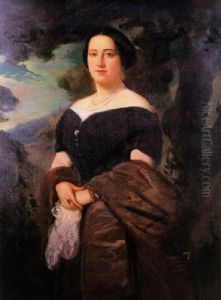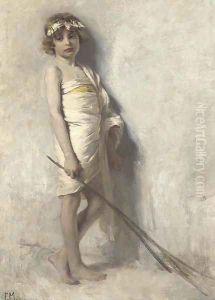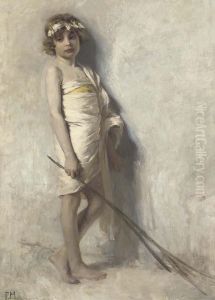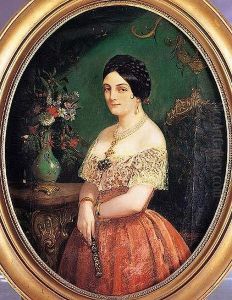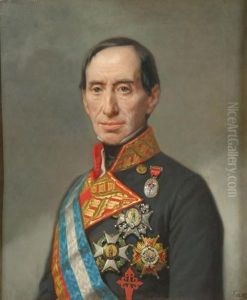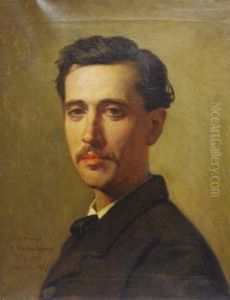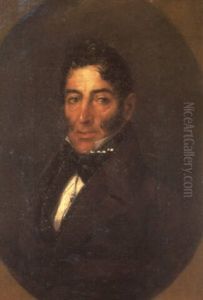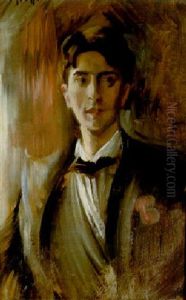Federico De Madrazo De Ochoa Paintings
Federico de Madrazo y Kuntz was a renowned Spanish painter, born on February 9, 1815, in Rome, Italy, where his father, José de Madrazo y Agudo, also an esteemed painter, was working at the time. Federico was part of a prominent family of artists that had a significant impact on 19th-century Spanish art. His brothers, Luis de Madrazo and Pedro de Madrazo, were also recognized in the artistic community, with Pedro particularly known for his work as an art critic and historian.
Federico began his artistic education under the tutelage of his father and later attended the Real Academia de Bellas Artes de San Fernando in Madrid. His talent was evident from an early age, and he quickly established himself as a portraitist among Spanish high society. In 1833, he went to Paris to study with Léon Cogniet, which broadened his stylistic range and introduced him to the neoclassical and romantic currents that were prevalent in French art at the time.
Upon his return to Spain, Madrazo became the court painter to Queen Isabella II, a position that greatly enhanced his reputation and influence. His style was marked by a polished technique and an elegance that reflected the refined tastes of the European aristocracy. Throughout his career, he received numerous honors and awards, including the prestigious position of Director of the Museo del Prado in Madrid, which he held on two occasions, and where he played a key role in the reorganization and cataloging of the museum's collections.
Madrazo's work was not limited to portraiture; he also painted historical, religious, and genre scenes. However, his portraits are what truly marked his legacy, capturing the likenesses of many important figures of his time with a sense of realism and psychological depth. His influence extended beyond Spain, as he maintained connections with the French artistic circles and participated in various international exhibitions.
Federico de Madrazo y Kuntz passed away on June 10, 1894, in Madrid, leaving behind a body of work that continues to be celebrated for its technical mastery and elegant portrayal of 19th-century European society.
